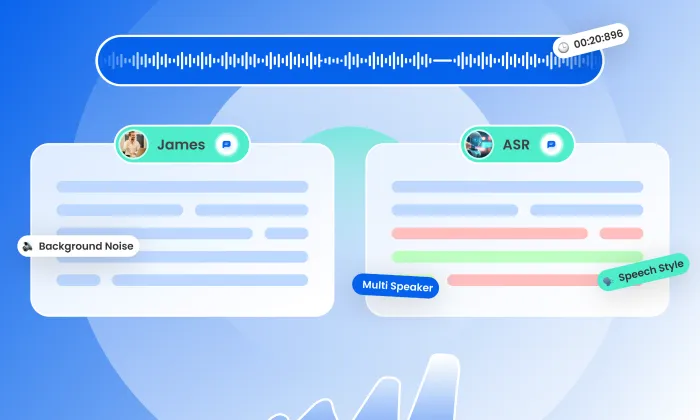How are different speaking styles (formal vs casual) represented in doctor–patient conversation dataset?
NLP
Healthcare
Speech Analysis
In exploring how different speaking styles, such as formal and casual, are represented in doctor-patient conversation datasets, it's essential to understand both the context and the value this brings to AI applications in healthcare. These conversations train AI systems to capture the nuances of human interaction, which are crucial for effective communication in medical settings.
Understanding Formal and Casual Speech
Formal speech typically involves structured, professional language, often filled with medical terminology and precise instructions. It's crucial in clinical settings to ensure clarity and accuracy. On the other hand, casual speech is more relaxed and conversational, often using informal expressions and emotional language. This style fosters comfort and rapport, essential for patient engagement.
Why Capturing These Styles Matters
- AI Training: AI models need to understand and replicate both speaking styles to interact effectively with diverse patients. This capability is vital in multilingual healthcare environments where cultural nuances influence communication.
- Patient Engagement: Casual, empathetic communication can enhance patient understanding and trust, leading to better adherence to medical advice.
- Improved Outcomes: By accurately capturing speaking styles, AI systems can better support doctors in delivering personalized care and improve patient satisfaction.
Method of Capturing Speaking Styles
- Realistic Scenarios and Diverse Interactions: FutureBeeAI’s Doctor–Patient Conversation Speech Dataset is designed to reflect natural clinical interactions. Conversations are unscripted and involve real doctors in simulated scenarios, ensuring a mix of formal and casual language. This approach captures the natural flow of communication, including overlaps, pauses, and emotional cues. The dataset includes both inbound (patient-initiated) and outbound (doctor-initiated) interactions, reflecting a balance between casual inquiries and formal medical advice.
- Recording Methodology: Conversations are recorded in realistic settings, either via telephone or in person, using the Yugo data collection platform. This ensures environmental authenticity, from the quiet of a clinical room to the ambient sounds of telehealth platforms. Such settings help preserve the natural dynamics of doctor-patient interactions.
- Annotation and Speaker Roles: The dataset is meticulously transcribed and annotated, capturing not just the spoken words but also the intent and emotional tone. This includes tagging empathy and sentiment, which are critical for understanding communication nuances in healthcare. The diversity in speaker roles, covering different ages, genders, and cultural backgrounds, ensures a comprehensive representation of speaking styles across various demographics and medical contexts.
Real-World Implications
- Impact on AI Effectiveness: By integrating both formal and casual speaking styles, AI models trained on this dataset can effectively engage patients, improving communication and outcomes. For example, a conversational AI system can switch from a formal tone when explaining a diagnosis to a more casual one when offering reassurance, thereby enhancing patient experience.
- Scenario-Based Examples: Imagine a scenario in a cardiology consultation where a doctor explains a complex procedure in formal terms to ensure clarity and then shifts to a casual tone to address patient concerns and fears. Such interactions, replicated in the dataset, equip AI systems to dynamically adapt their communication style, fostering better patient relationships.
Key Considerations in Dataset Design
- Balancing Realism and Control: Ensuring conversations are realistic while maintaining medical accuracy requires expert oversight.
- Cultural Sensitivity: Datasets must reflect diverse communication styles without reinforcing stereotypes, requiring careful design and ethical oversight.
Common Missteps
- Overemphasis on Formality: Focusing too much on formal language can hinder AI's ability to engage empathetically.
- Neglecting Emotional Nuance: Failing to capture the emotional aspects of speech can lead to AI misinterpreting patient needs.
Final Thoughts
Capturing both formal and casual speaking styles in doctor-patient datasets is vital for developing AI systems that enhance healthcare interactions. FutureBeeAI's datasets provide the foundation for building responsive and empathetic AI, ensuring better patient outcomes and improved healthcare experiences.
Smart FAQs
Q. How do AI systems learn to differentiate speaking styles?
A. AI systems use natural language processing techniques to analyze speech patterns, tone, and context. They identify formal and casual styles through linguistic cues, such as the use of jargon versus colloquial language.
Q. What role does speaking style play in patient outcomes?
A. Speaking style significantly influences patient understanding and trust. Casual, empathetic communication can enhance patient engagement, leading to better adherence to medical advice and improved health outcomes.
What Else Do People Ask?
Related AI Articles
Browse Matching Datasets
Acquiring high-quality AI datasets has never been easier!!!
Get in touch with our AI data expert now!








